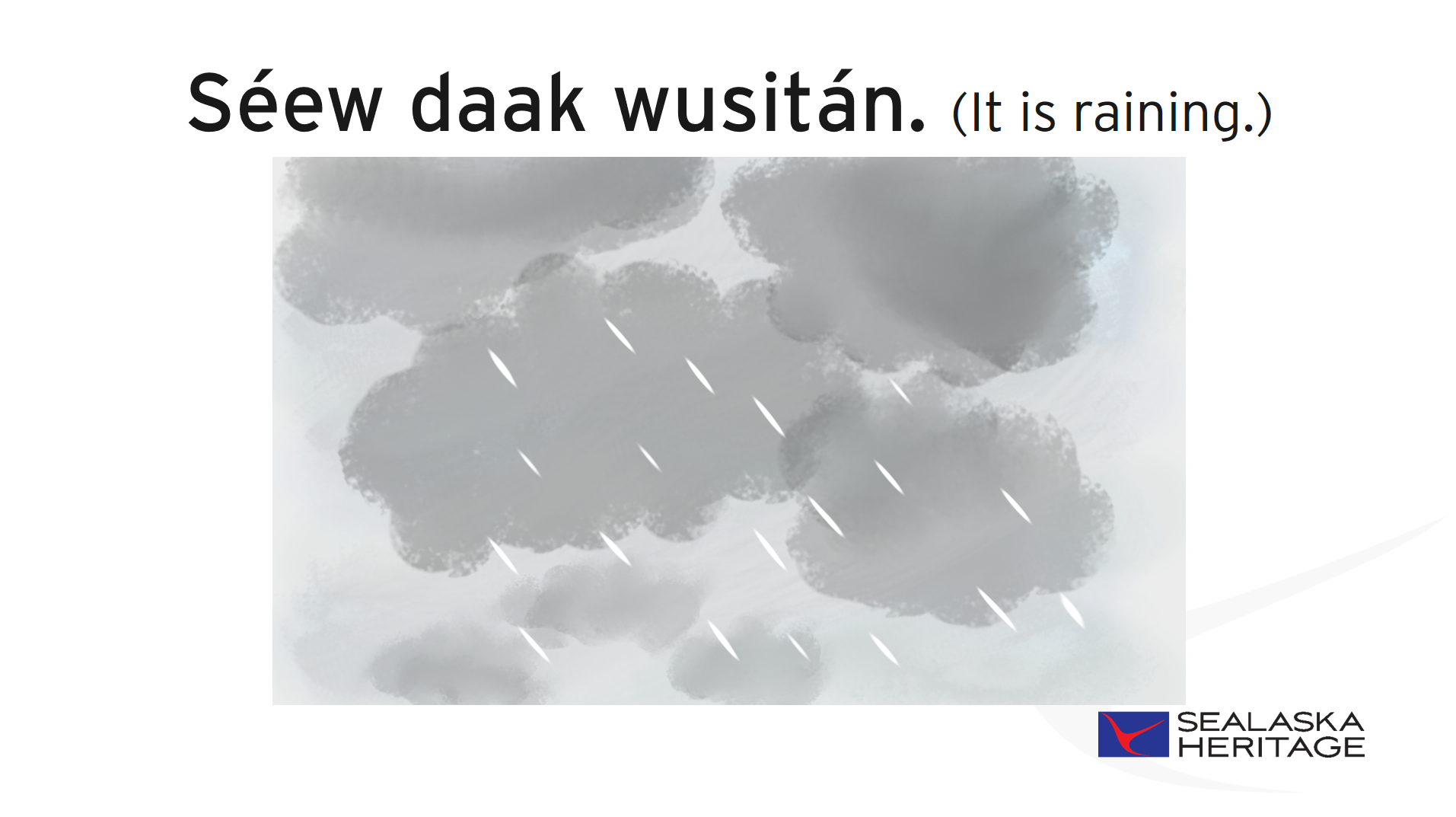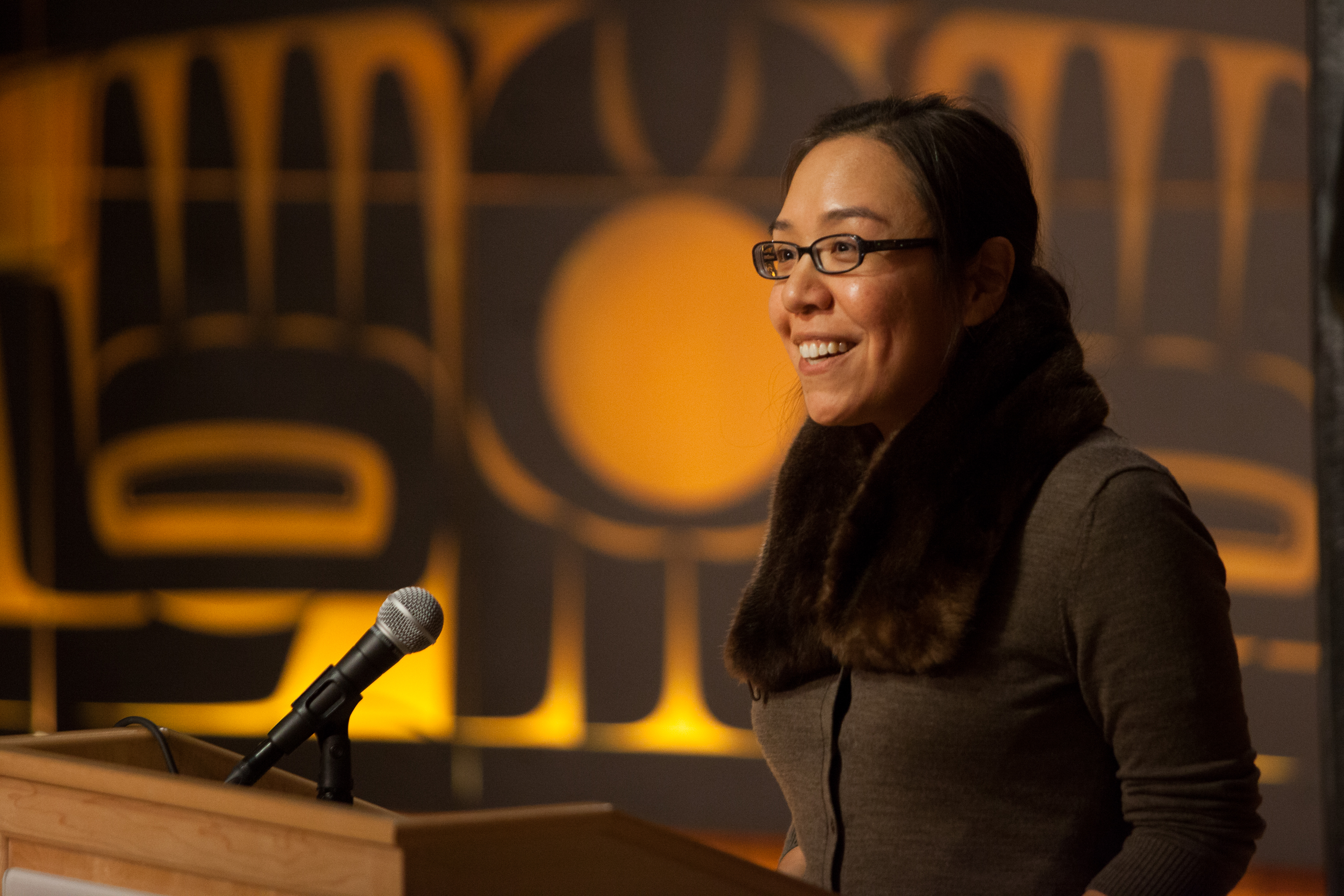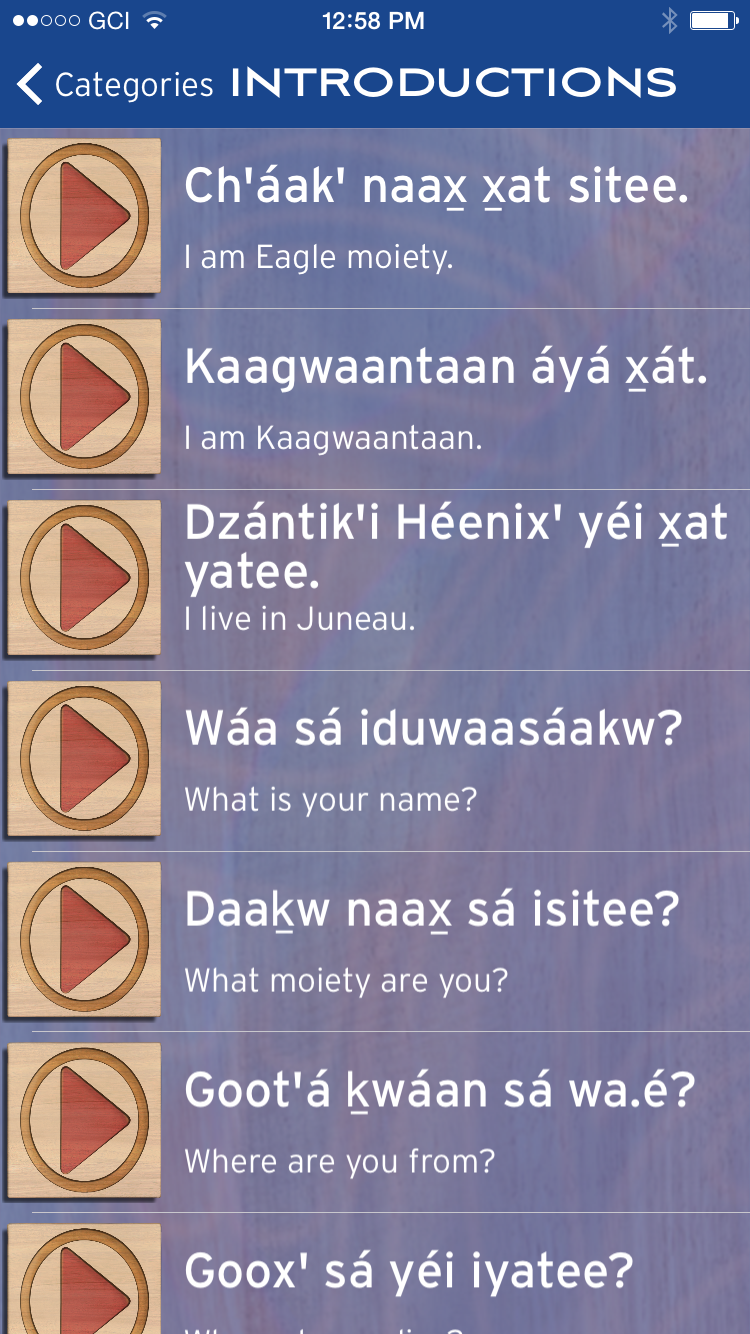Like so many other indigenous languages spoken around the world, Alaska Native languages are in danger of dying out.
According to a 2007 study by linguist Michael E. Krauss of the University of Alaska–Fairbanks, only three of the 20 recognized Alaska Native languages have more than 1,000 native speakers. (Compare that figure to the most commonly spoken Native language in America, Navajo, which has 170,000 native speakers.) Several are extinct or close to it: The last native speaker of the Eyak language died in 2008, as did Holikachuk’s last fluent speaker, in 2012.
One of the most endangered is Tlingit, one of four languages from Alaska’s southeast region. Tlingit had 125 native speakers as of 2013—a low number considering that the Tlingit population hovers at around 10,000 and that every other extant Alaska Native language has a higher percentage of community members who can speak it.
Recently, advocates who have been establishing means of revitalizing Alaska Native languages have created new opportunities for the preservation of Tlingit. Perhaps the most creative effort has been that of the Sealaska Heritage Institute, a non-profit based in Juneau that promotes understanding of Southeastern Alaska Native cultures. In late 2016, it produced two phone applications and a podcast that aim to teach users the Tlingit language. One app teaches Tlingit sounds and some basic words and phrases, while another instructs listeners on the Tlingit words for animals that live in Southeast Alaska through interactive games.

(Photo: Courtesy of the Sealaska Heritage Institute)
The podcast is currently composed of two different types of episodes: Standard audio episodes include recitations of Tlingit words and their English translations. Video episodes use vibrant images and graphics to illustrate the meanings of Tlingit words—in one lesson on verbs, for instance, the podcast includes images of community members acting them out, charades-style. In these cases, learners aren’t simply reading or hearing translations—they’re building visual associations.
Recently, Katrina Hotch (Ak.lá), the language project coordinator for Sealaska Heritage (and an ongoing Tlingit learner herself), spoke to Pacific Standard about how podcasting can and can’t help language novices, and why she incorporated images into an audio-dominant medium.

What’s the story behind the Tlingit podcast and apps?
They come from our partnership with SERRC [Southeast Regional Resource Center]. One of its goals is to help teachers create welcoming environments for their students and to create culturally and linguistically sensitive learning environments within their classrooms.
I’ve also been structuring the podcast to help support people who are in areas where they don’t have access to a language teacher. So I choose the [word] sets that I know learners struggle with when they’re first learning. [For instance,] I chose the episode on confusing pairs because Tlingit is a tonal language: Sometimes the difference between two words is just the tone of it. I have episodes on just one letter [that show the] letter appearing in different places—starting the word or ending the word or being in the middle of it—and showing multiple examples of that. I try to have audio from as many speakers as I can, but I don’t always have audio from a speaker, so I have to record myself as a learner.
Is the podcast intended to help revitalize language learning specifically within the Tlingit community? Or is it also for learners who are merely interested in the language?
Well, both. Part of our mission here at Sealaska Heritage is to perpetuate our culture and language: I think having a podcast is another avenue of input. When you’re trying to learn a language, you need to spend time in the classroom. You need to spend time talking to speakers and reading the language passages that are available and just hearing it in as many avenues of input as you can to get the Tlingit language in your mind.

(Photo: Courtesy of Katrina Hotch)
How does the podcast build on the “Learning Tlingit” app, and how do both of these new resources build on existing materials and methods of learning?
I think the podcast is a complement to the app. In our app, we have the alphabet sounds just by themselves. Then you have the lessons that focus on just one sound. Also, in the app, there aren’t a lot of visuals. In the podcast, listeners can pair the language with pictures of things. So they’re getting to connect the Tlingit word with visuals instead of just seeing, “This is what it says in English.”
On that note, I was interested in the format of the episodes. In the video episodes of the podcast, the Tlingit words and phrases are paired with images or graphics that depict their meanings. The English translations only come at the end of the video. Why did you choose to structure your episodes this way?
I think it makes it easier to remember what the meaning is when [the word] is paired with an image: When you see a plant out in the world, you can start calling it the Tlingit word that goes with that image. Otherwise, you’re trying to connect these symbols to these other symbols and their meanings. I think images are less abstract, and make [the words] easier to remember.
The episodes are varied in topic and content: There are some on grammar and speech, for instance, while others clarify sounds and some are small vocabulary modules. What’s your approach to crafting each of these episodes and deciding on topics for them?
I’ve been working at Sealaska Heritage for several years. For quite a while, I was the only language specialist here, and I would always get all the language requests that came in, so I gauged what kinds of things people were wanting to say in the language. I made those my priorities, focusing on what learners struggle with, things that meet the requests that we get most often.

(Photo: Courtesy of Sealaska Heritage Institute)
Do you expect users of the app and listeners of the podcast to be able to achieve fluency or proficiency? Or are you just trying to fill in some of the blanks?
We’re trying to help people move farther [in their language learning] than when they first started, but there’s still much [for them] to learn in communicating with the language. It’s a whole different worldview, which you can’t really explain in an app. But you can revisit words and phrases as often as you need to. You just hit the button again and then you hear it again. I think this will help people with their pronunciation quite a bit and will expand their vocabulary and basic phrases.
I’ve been studying Tlingit for years. It’s one of those things where I feel the more I learn, the more I’m aware of what I don’t know. I always feel like I’m at the surface of it. I think what we have will definitely support people in pronunciation and improving their working language. It’ll help them to speak with more advanced speakers. It’ll be easier for them to be understood because they have so many examples of fluent speakers—all of the speakers in the app are fluent speakers.
The podcast is a little different. Some of the newer episodes coming out [will take on a different format]. I got to interview some language apprentices and language mentors and talked to them about what was important to them in the language. I think it’s good to have voices other than just mine [explain] why this is important. Passion is contagious, and if people are hearing people who are passionate about the language, then it draws them in more. I also talk with other people who are involved with language work and [ask] what kind of advice they have for people who are just starting to learn. It’s a wide spread of things that are included in there.
On that note, what are your future plans for the podcast?
Well, I did get to expand the episodes into Xaad Kíl and Sm’algyax, which are the two other heritage languages of our region [of the Haida and Tsimshian peoples, respectively]. There aren’t going to be as many of these—we’re limited by my abilities. But I’m excited to be able to integrate those into the video podcast—there’s going to be some vocabulary of Xaad Kil and some video of Sm’algyx.
What are some other initiatives of the Sealaska Heritage Institute right now to encourage language and cultural preservation?
We just launched our Haa Shuká program recently, and we had five language teams here in April for their orientation and training. It was really neat because one person had her birthday during it. Everyone sang to her in Tlingit, and they sang to her in Xaad Kíl, and they sang to her in Sm’algyax. It was the first time I heard “Happy Birthday” sung trilingually.
This interview has been edited for length and clarity.





